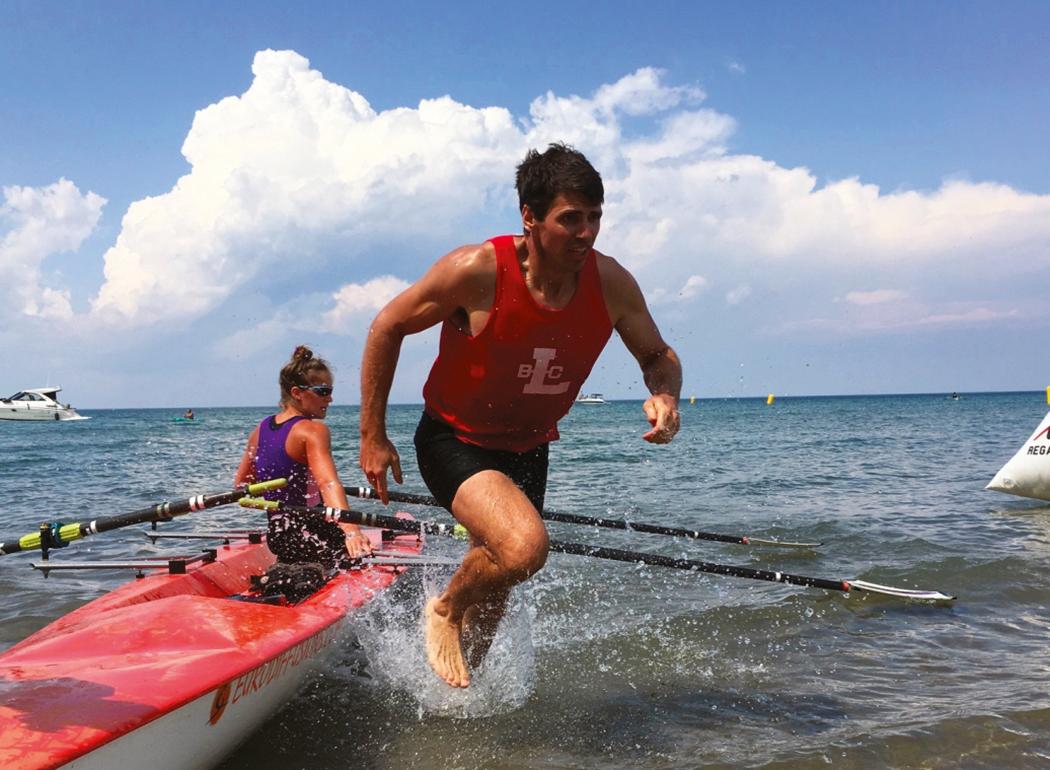Physical Address
304 North Cardinal St.
Dorchester Center, MA 02124
As a competitive sport, rowing dates back several hundred years and was an original sport in the modern Olympic Games.
First intercollegiate sport in the United States; initial race held in 1852 (Harvard vs. Yale).
With the adoption of Title IX regulations, the participation of women in collegiate rowing has surged, from roughly 1000 in 1981–1982 to approximately 7300 today, now surpassing males.
On-water: Usually high volume (one to three times daily, 1–2 hours in length), with higher-intensity pieces and intervals during the summer racing season.
Indoor: On rowing ergometer (dynamic and static options); simulates water training and monitors fitness.
Cross-training: Resistance training, running, cycling, and cross-country skiing; used to supplement water training or during winter. Injuries may result from inappropriate transition to cross-training from on-water practices (and vice versa) or via resistance training.
Anaerobic portion 10%–30%; aerobic system supplies remainder.
Ranks among the most strenuous of sports with high cardiovascular strain and lactate measurements of ≥15–20 mmol; V.O 2 max values can exceed 70 mL/kg/min in elite rowers.
2000 meters: Olympic distance and standard for collegiate and club spring/summer racing; boats line up side by side at starting gates in up to six lanes. Races typically last for ≥5.5–8 minutes, depending on event, weather, and rowers’ ability. World record in Olympic men’s eight event is under 5 minutes 20 seconds.
1000 meters: Paralympic distance and standard for adaptive (para-rowing) and Masters competitions.
Head racing: Predominantly in the fall season; distance usually is ≥3 miles against the clock from a moving start and involves steering on rivers that bend and turn.
Open water/coastal rowing: The “adventure” side of rowing—along a seacoast or inland on some lakes or rivers where water is rough. Boats are wider and sturdier: singles (solo) and doubles and coxed quadruple sculls (also used for recreational rowing touring). Requires knowledge of tides, currents, and maritime traffic. Races typically 4000 m for heats and 6000 m for finals, with buoyed turns. Beach sprints are shorter distances with a running start to the boats, sometimes relay format ( Fig. 85.1 ).

Rowers are classified by sex (male or female), age, weight, and ability (para-rowing).
Age categories are Junior (age ≤18 years), Under 23 (<23 years), Senior (open), and Masters, ranging from “A” (age ≥27 years) to “M” (age ≥89 years).
Weight categories are lightweight and heavyweight/open.
Both types of rowers have similar builds, although lightweights (because of the need to “make weight”) typically have lower body fat, have more muscle mass, and may be slightly shorter.
Being tall and lean allows maximum stroke length while minimizing drag on the boat.
Weight restrictions: Lightweight rowers typically weigh in 1–2 hours before racing at or below the maximal weight. Weight restrictions are as follows:
Men: 70-kg crew average, 72.5-kg individual maximum.
Women: 57-kg crew average, 59-kg individual maximum for an international competition. National rules vary.
Coxswains: Steer the boat using a rope attached to the rudder; make technical and motivational calls and decisions about strategy; minimum weight is 55 kg (international regulations); if underweight, must carry weight for racing to a maximum of 15 kg. As of 2017, coxswains can be gender-neutral (i.e., women can cox men’s crews, and vice versa).
Para-rowing comprises three classifications based on the nature of the disability:
PR1 (Para Rowing One, formerly known as AS or Arms and Shoulders): Rowers are effectively rowing with arms and shoulders alone.
PR2 (Para Rowing Two, formerly known as TA or Trunk and Arms): Rowers whose movements include use of arms, shoulders, and trunk.
PR3 (Para Rowing Three, formerly LTA or Legs, Trunk, and Arms): Rowers with essentially full range of movement with restricted ability in areas such as vision or digit loss on the hand.
Become a Clinical Tree membership for Full access and enjoy Unlimited articles
If you are a member. Log in here